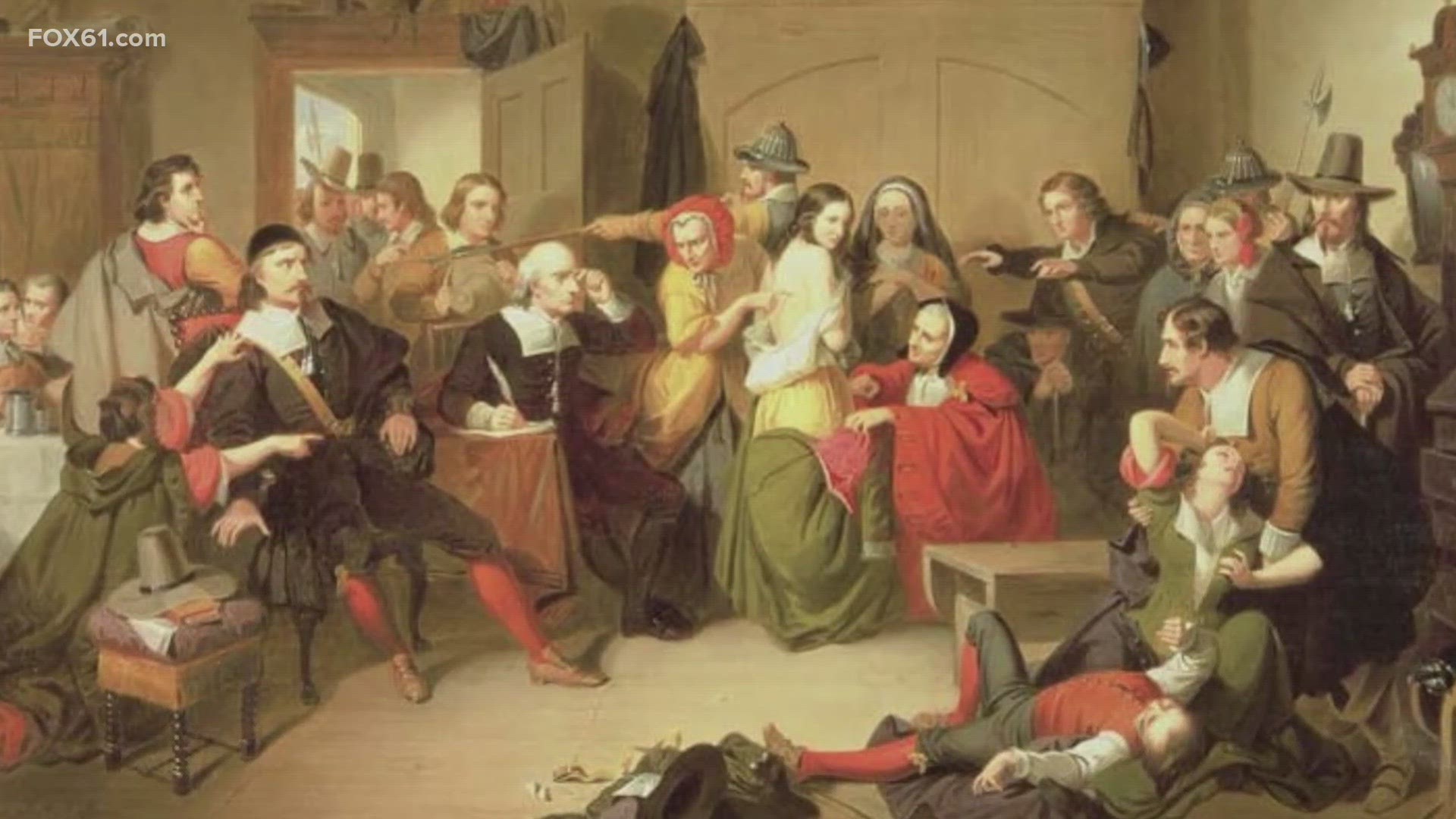HARTFORD, Conn. — Artifacts offer keys to the past, unlocking perspectives on even the darkest parts of history that are hard to make sense of. That remains the case with Connecticut’s 17th-century witch trials, which were the first in the American Colonies and predated those in Salem by about 45 years.
New research shows that the specter of witchcraft continued to haunt some Connecticut residents into the 18th century, according to historian and publisher Dr. Katherine Hermes.
Hermes outlined newly discovered witchcraft accusations in the Fall 2023 issue of Connecticut Explored, the magazine of Connecticut history, and notes that 50 years after the state’s last executions for witchcraft, people still made accusations.
One of the articles published in Connecticut Explored notes research at the Connecticut State Library that revealed a case in Guilford in 1742. An elderly widow, Elizabeth Gould, sued Benjamin Chittenden for slander for claiming she was a witch.
Chittenden’s accusation was graphic: “[sic] he did believe She... was a Witch and had Reason to believe it because She... rode down here... & came in & got upon my Breast... & Lay upon me so hard as to make the Blood flie out at my Mouth & Nose.”
Gould alleged that Chittenden was “[sic]Envious at the Happy Estate of the Plaintiff & minding to vex & grieve her unjustly, & her to Slander.”
She poignantly described how his accusation rendered her an outcast in their community, bringing her into “[sic]Disgrace Contempt, & Abhorrence, as well as [depriving] her of the Society Traffick & both Pleasant & Necessary Converse of her Neighbours.”
According to Hermes, the court found Gould’s plea “insufficient” and awarded Chittenden the recovery of his court costs. Gould’s status as a widow likely damaged her credibility.
“Elizabeth Gould fit a stereotype of a witch— old, long-widowed, and in possession of property that other people wanted. It seems incredible to us today that a woman of nearly 70 years would be vulnerable to charges of immorality or even witchcraft,” Hermes said.
In another example, Hermes cites a 1716 transcript of testimony by 16-year-old Susannah Howard of Wethersfield. Howard’s allegations against Dr. Alexander Williamson, who had “treated” her father for eight months, included: “[sic] Sometime in the last summer past I heard Doctor Williamson say at my father's house that he could charm a snake to death in speaking a few words…And further he said that in England in a by-place there was a circle and he went into it, and he had a book that he read in, and after he had read awhile he raised the devil and the devil strove [fought] with him for the book…”
Assuming Howard's testimony was accurate, its transcript is the first document in Connecticut demonstrating an admission to practicing witchcraft that was not coerced or produced under duress.
A handful of artifacts at the Connecticut Museum of Culture and History also tell the tales of Connecticut’s witch trials. Among them is a printed copy of the laws of the Connecticut Colony from 1673, which lists witchcraft as a capital offense punishable by death.
The museum is also home to a book called The Kingdom of Darkness, which was published in the 1720s in England and details various manifestations of demons and witches.
“This is telling us their understanding of witchcraft, we tend to think of it as sort of like a supernatural thing. This was very, very based in their version of Christianity,” said Natalie Belanger, adult programs manager at the Connecticut Museum of Culture and History.
The Connecticut witch trials began in 1647, which was 45 years before the hysteria in Massachusetts and ran for 50 years until 1697. According to the Connecticut Witch Trial Exoneration Project, a group made up of descendants, advocates, and researchers, 34 people were indicted, and 11 were executed during this period.
The first execution was in 1647, and the last executions were in January of 1663, during the end of the Hartford Witch Panic.
“The Puritans were really into the law. They had a very strict sense of due process, so when you got accused of witchcraft, it was a written complaint. There were magistrates. You had a trial. They are trying to apply due process and fairness to this phenomenon that we think is inherently unjust,” Belanger said.
What’s left of those legal records are mainly kept at the state library, but finding them among the stacks requires some heavy-duty digging. When documents are found, they offer new perspectives and context.
“There’s a lot we don’t know about why people were accused,” Hermes said. “I would not be surprised if people found more accusations like the ones we found in the 18th century in civil cases.”
“It’s easy to look back at this story of witch hunting and just dismiss it as people were ignorant back then, they were stupid, they were silly, but this was very real to them. And if you think of the things you hold most deeply, this was as real to them as those are to you,” Belanger said.
You can find more information about buying the Connecticut Explored magazine on their website.
Angelo Bavaro is an anchor and reporter at FOX61 News. He can be reached at abavaro@fox61.com. Follow him on Facebook and X.
---
Have a story idea or something on your mind you want to share? We want to hear from you! Email us at newstips@fox61.com
----
HERE ARE MORE WAYS TO GET FOX61 NEWS
Download the FOX61 News APP
iTunes: Click here to download
Google Play: Click here to download
Stream Live on ROKU: Add the channel from the ROKU store or by searching FOX61.
Steam Live on FIRE TV: Search ‘FOX61’ and click ‘Get’ to download.

